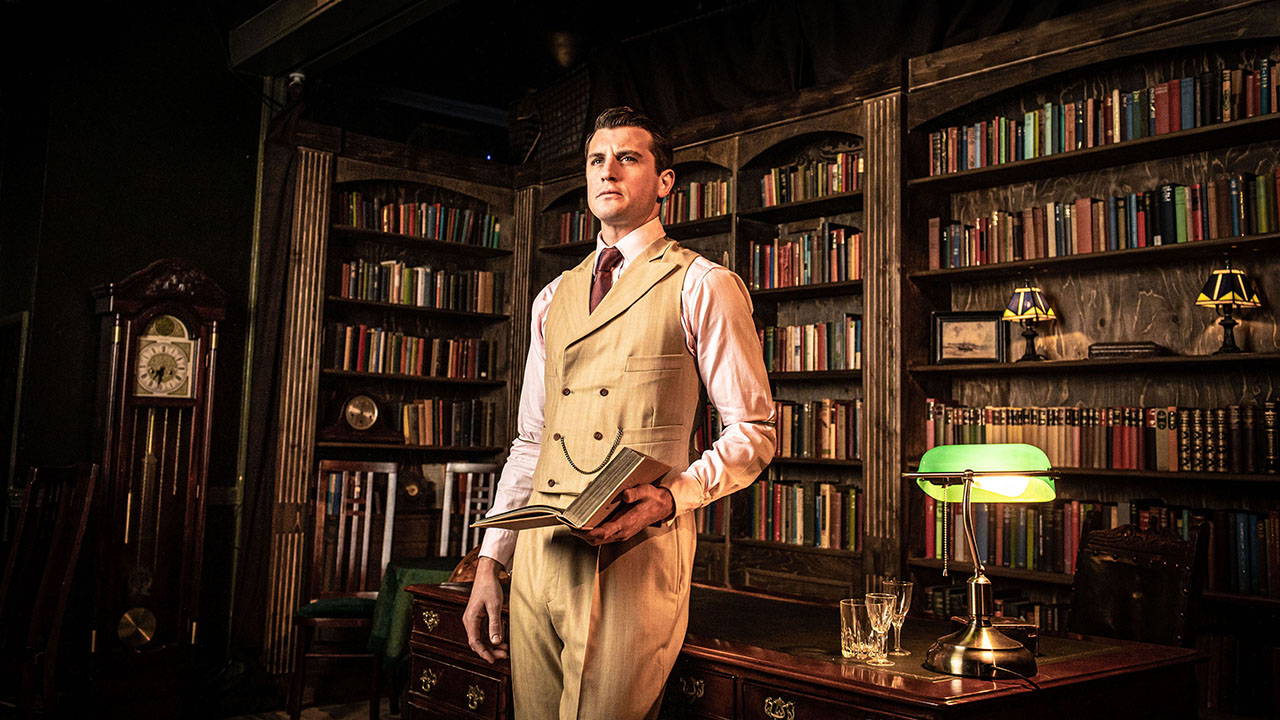We recently had the chance to check out The Great Gatsby, London’s longest-running immersive theatre show that started at the Vaults Festival back in 2017. Having closed for the pandemic, it’s now back open and welcoming people through its gilded doors at Immersive LDN.
(For context, catch up on Campfire 20: The Immersive Firestarter for debate on what makes an truly immersive experience.)
We sent WXO CEO James Wallman, escape room creator Sheena Patel, creative producer Mark Slade (not in the picture), experiential architect Meredith O’Shaughnessy and AR expert Rob Morgan to rate and review the experience.
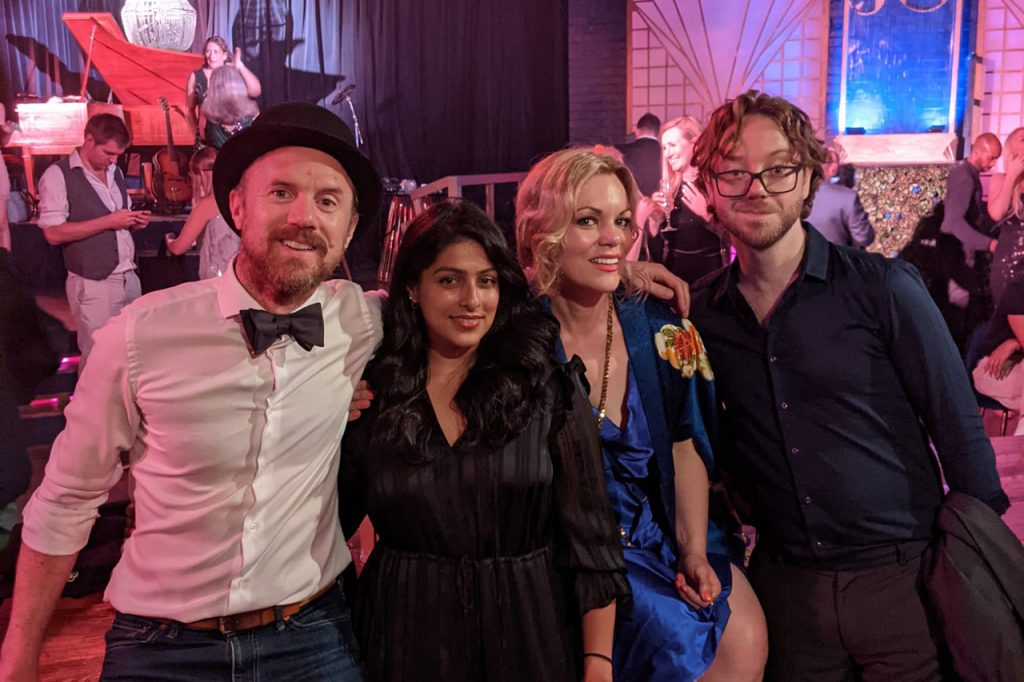
James Wallman: “This wasn’t so much immersive theatre, but it was very good interactive theatre.”
The WXO team went on one of the opening nights after London opened up after the pandemic. That brought a real sense of occasion, a feel-good sense that we’d all been let out from a cage. We walked out of 2021, and up the stairs, behind a curtain to the 1920s…
What’s good about the experience?
- We’d received an email telling us that we should dress the part because we’re going to the 1920s, with a suggestion of where we could find the right kind of kit. Nice, helpful touch.
- As we arrived at the curtain, a man in a sharp 1920s suit and hat greeted us, speaking like a 1920s New Yorker. Instantly we’re pulled in. This wasn’t a service person leading us in, it was a proper actor / interactor dropping us straight into the story. I especially like the way he told us to turn our mobile phones off, while talking staying in character and even, ‘in era’. “Hey, just a reminder, guys,”, he said,”It’s 1924. This of course means there’s no mobile phones, so you want to be switching those off.”
- The thing that stood out most to me was just the story and the acting. The quality of the acting was exceptional. And so there were moments of pure emotion, which is something that happens to you, a feeling that you have. I was completely absorbed at times. In the story and the acting. At one point, towards the end, I actually cried.
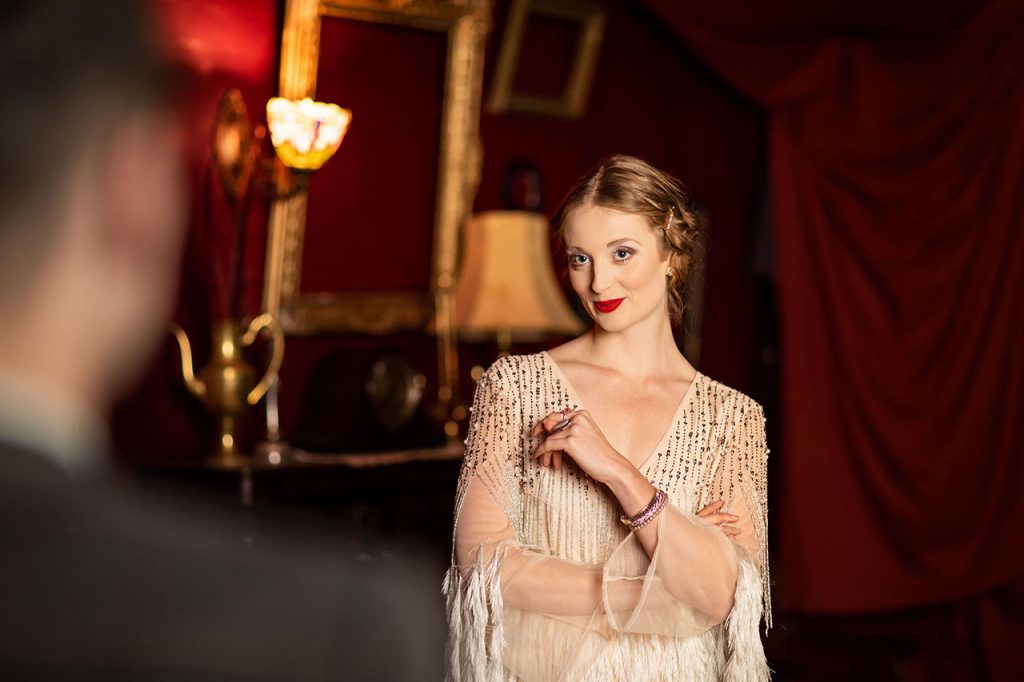
- I also really liked the costumes and the set. I liked being on the stage and in the stage. You could sit anywhere you wanted with a drink, and then sometimes you have to move because the actors were there, but being in amongst the action was thoroughly enjoyable. The actors were not only great actors but also great interactors. And they seemed to have a very good sense for knowing when to break the fourth wall and reach out. For example, when they were preparing for a dance or something they’d get everyone who’s dressed in the right costume for that moment to stand at the front to make it look right for everybody. And when people would come past you, they would stay in character but maybe tell you to get out of the way, but in a good way.
- In one interaction, I was given a card with a mobile phone number on it by a guy called Rosie. He told me I had to call this number to get a racing tip. When I called it, it went to voicemail, playing a message about what had happened with the lead character, Jay. It was neat piece of interaction, a useful ‘memory anchor’ – see Bob Ross’s use of this term in Campfire 1. And it was a neat way to extend the experience and firm up the memory. (For more on ‘extending’ the experience, read The Experience Economy or Joe Pine’s talk in Campfire 11.)
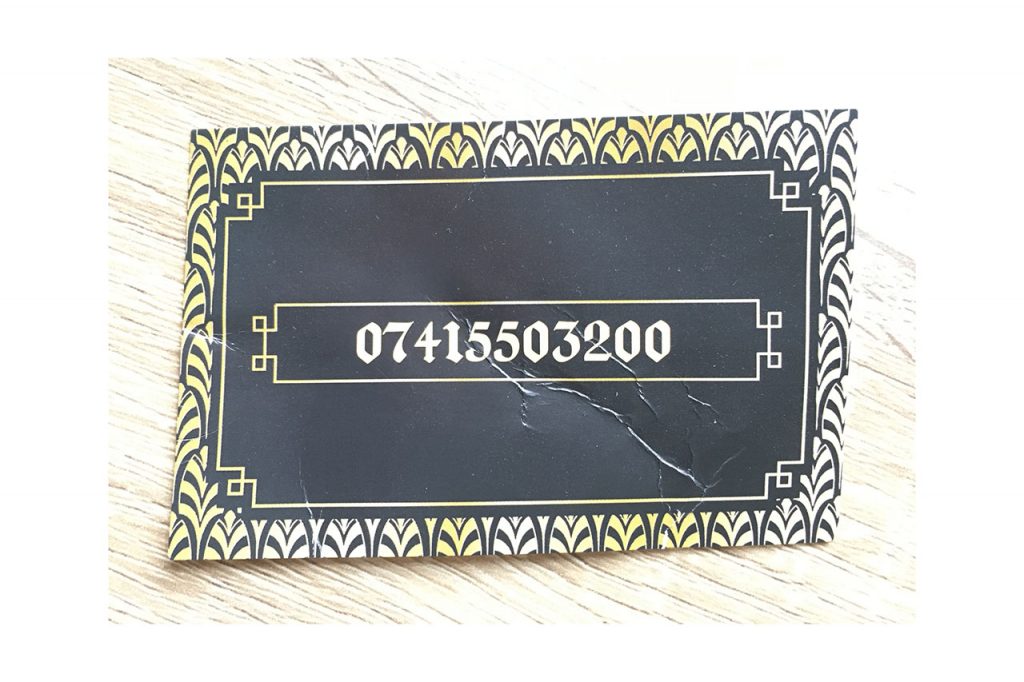
What could be improved?
- It was really hard to keep up with the story sometimes. It was hard to know who was doing what and how each person was involved – and I wasn’t drunk. I think maybe they could just tell the story beforehand. Maybe even introduce the characters? I think it can be harder in that sort of setting to keep up with who’s who. When you’re just watching people on a screen you know what’s going on, and I think that clarity would be quite helpful for the enjoyment of the story.
- Sometimes characters would go off into side rooms away from the main space and take some people with them. This presented three problems. The first problem is FOMO. And FOMO is a problem because when you feel like there’s something going on over there that you’re missing out on, you get pulled out of the story unfolding in front of you and lost concentration.
- The second problem was the noise that sometimes came from the other side rooms. So although I was trying to concentrate on the story of the room I was in, I was wondering what was going on somewhere else. And if it was better. This broke concentration and pulls the rug out of the possibility of immersion.
- The third problem is that when a character would head off to a side room, a whole bunch of people would move in that direction too, and that felt quite chaotic. But worse was if you made your way in that direction, but they’d hit capacity before you made it there, and just closed the curtain. So all of a sudden we were queuing and being denied, so that was frustrating.
- Eventually I managed to position myself so that I could head into a side room. I wanted to see what was going on out htere! But that meant I spent time thinking about the strategy of where I should stand in order to get the maximum out of my experience at The Great Gatsby. And that, of course, took me out of the emotion of the story.
- The strategy paid off though, and finally, we all got into a side room. It felt really personal and intimate and the kind of interactive feel was really powerful and enjoyable, and the sets were great and detailed.
- Maybe a way to solve this could be by giving people identity before we arrived, so that those people with a particular identity would head off to the particular side rooms. I think Secret Cinema do this very well. At their Star Wars experinence, for example, we turned up as particular characters with particular roles to play. Perhaps with The Great Gatsby, they could have people be from Brooklyn or the Bronx or Manhattan, or bankers or ‘Oxford men’ (a favourite phrase of the lead character, Jay Gatsby). We could have an identity that those people could follow or perhaps you would be given a card when you came in and that would instantly take you to a certain part that’s your role to play. An identiy that could tell you when a particular story moment happened, This is the time for you. That would be a nice way to break people up from their friends and build a wider sense of , which I think would be fun, and it brings unity to everybody who’s there, rather than just within your groups. I think one of the things that happens, even though it’s better than normal theater, is people still stick to their groups, and I think the awesome fun of these things is when you play with other people.
- The entrance was really powerful. But then we were sent on our way and given a dream that was very nice, but why not a second actor / interactor who would take us on and bring us into a different part of the bar, or a different thing that was going on and if we were a certain person, a different menu would be open to us?
- When it comes to this idea of what is immersive, there’s immersive by design, and immersive by feeling what happens. And I think this was much more about (very good, very enjoyable) interactive theatre than true immersive theater.
Which elements do you like so much you’d like to use them in your work?
- The entrance. I really loved going straight into the story, this story- / experience-led way of providing a useful piece of service information (switching off our phones).
- I think having a second inviter, as well so there’s different steps into the experience (more on this from Annette Mees in Campfire 21). So just one person at one step was very good. And then we were left our own devices and I think a little bit more of that and that would have thrown us a little bit more into the scene and the conversation.
- Perhaps conversation cards could be really useful here. So we will be set to start discussing the kind of things that would be discussed in The Great Gatsby – conversation cards around the themes and ideas about the Oxford man or what happiness looks like, for example.
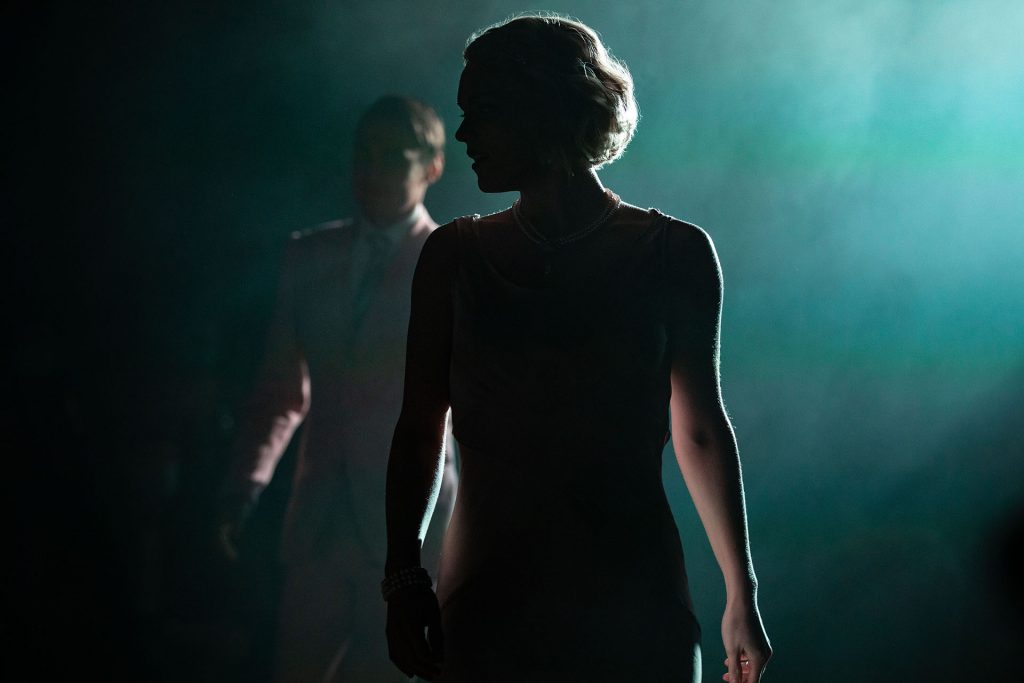
Mark Slade: “If they had sold it as a theatre show with a twist, my expectations would have been different.”
What’s good about the experience?
- The energy from all of the cast and performers was really good and you could feel their intensity. Some of the cast were especially convincing in terms of their acting calibre.
- Layout of the relatively small and compact main room space was smart, with the stage and raised areas creating the amphitheatre for the performances.
- Being approached by an actor who offered us a business card with a number on it to call and place a bet was initially cool and made you feel like the narrative ran deeper then the scripted show, which created a moment of deeper immersion.
What could be improved?
- I wasn’t blown away by The Great Gatsby. It felt more like a fancy dress theatre in the round-style show than an immersive show. Again, it’s that definition and use of ‘immersive’ that draws criticism to it, because if they had sold it as a theatre show with a twist, then my expectations would have been different.
- There wasn’t really anything to discover or seek out beyond the main performance narrative. The back rooms were fun and well delivered, but it was very performance driven without any real moments of interaction with the audience around the narrative journey.
- The abstraction of the car behind the bar could have been more impactful, that moment felt like it could have been really surprising and exciting but the projection and sound design needed to work harder. From where I was standing it felt a little flat.
- More subplots and interactive narratives would make the experience deeper and more engaging for the more curious people in the audience – and therefore add weight to the idea of it being an immersive experience. It was a bit too passive in that respect for me.
- Some of the bar staff were making more of an effort than others with their American accents and in-story manner – the bar was a really key feature of the room and the delivery could have been sharper and more consistent from the service staff. Placing an actor or two in a perceived bar service role would have landed it better as being the in-story bar.
- Positioning the show as immersive brings a certain expectation that GG fell a little short on living up to for me personally – but as a modern promenade theatre experience that puts you into some of the story action, it was good fun.
Which elements do you like so much you’d like to use them in your work?
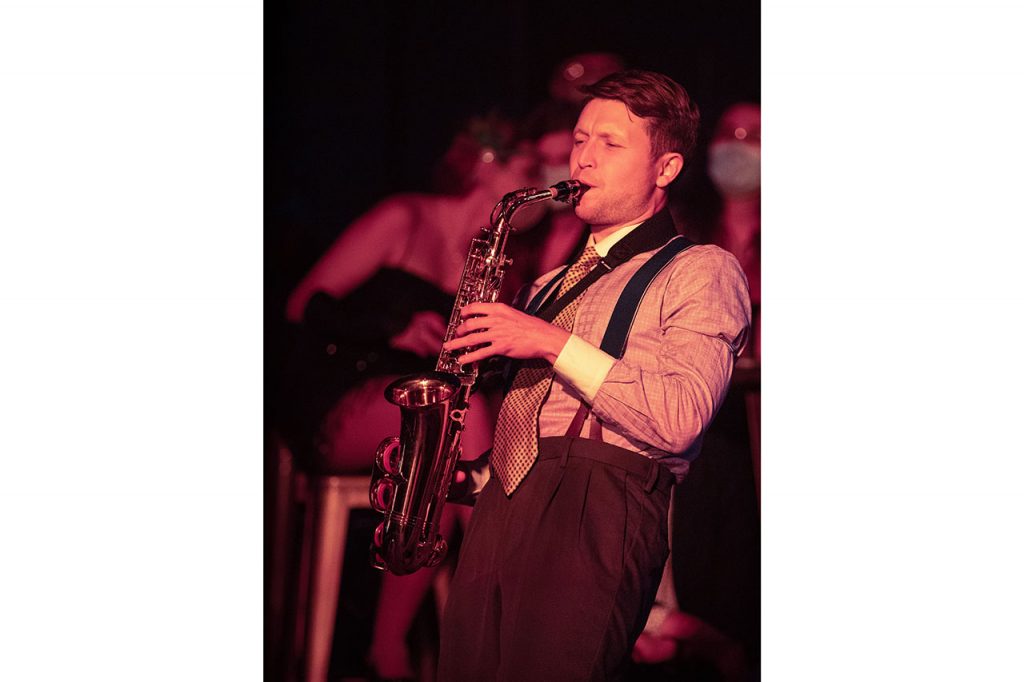
- Being met by a host very early on was great, they built expectation and excitement as you were led up the stairs and it was an effective way to lay out the house rules without breaking character/story.
- Sound design and music was great in places.
- Integrating the dances with the storyline and creating a way for the whole room to take part via basic instruction from the stage without breaking the story was really fun and helped gel the audience vibe.
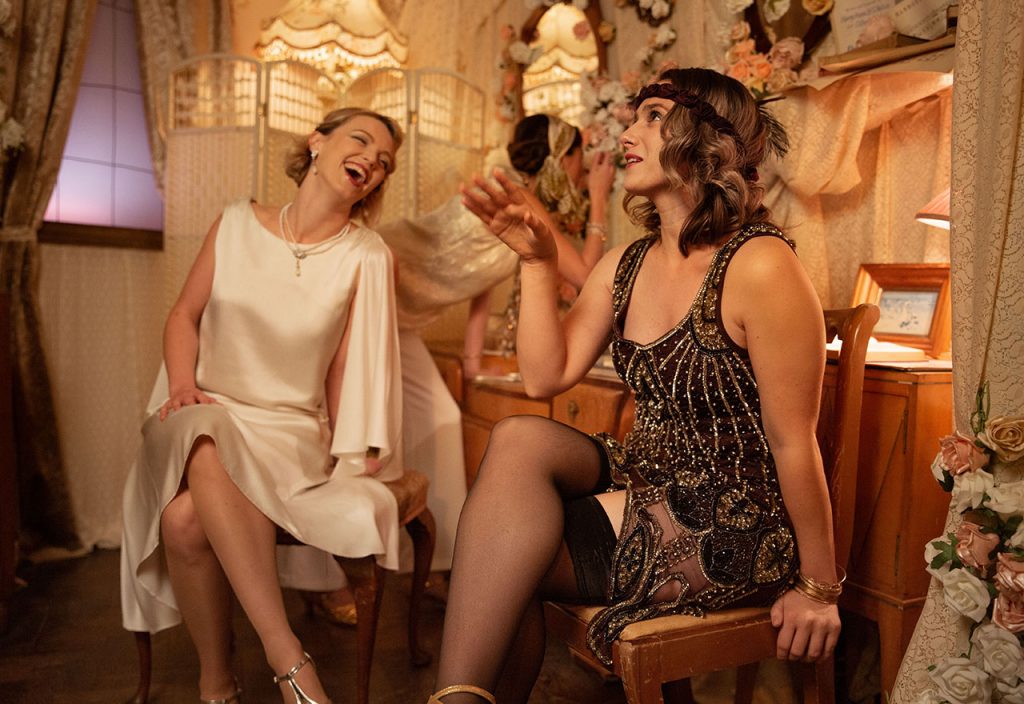
Sheena Patel: “I would explore how we could elegantly integrate essential resets in some of the experiences I design as intentional theatrical moments.”
What’s good about the experience?
- Great casting, particularly those performers who were new to immersive who really held their own on opening night, as it’s a completely different skillset to stage performance.
- The high tempo song and dance sequences were a great device to energise the room and facilitate audience participation from the outset, drawing them into feeling like legitimate guests at Gatsby’s party beyond simply arriving in costume and without putting them on the spot and forcing them to be individually ‘performative’.
What could be improved?
- It would have been great if there was an opportunity for all audience members to explore the areas peripheral to the main performance space at the outset, perhaps through a promenade sequence at the beginning where you were introduced to the characters in their ‘homes’ (or whatever all the other areas were). There was a sense of FOMO for those who were not invited to peel away from the crowd and watch the various vignettes delivered throughout the evening, which detracted attention from what was happening in the main room where all the key narrative beats were delivered. Even if it may not always be possible to facilitate vignette scenes for everyone in the audience, allowing them to explore the whole set at some point could alleviate any potential frustration.
Which elements do you like so much you’d like to use them in your work?
- I really enjoyed how stage set changes were integrated as jaunty, choreographed moments throughout the performance, particularly the afternoon tea scene. I would certainly explore how we could elegantly integrate essential resets in some of the experiences I design as intentional theatrical moments to reduce the amount of time we currently need to leave between groups entering a space.
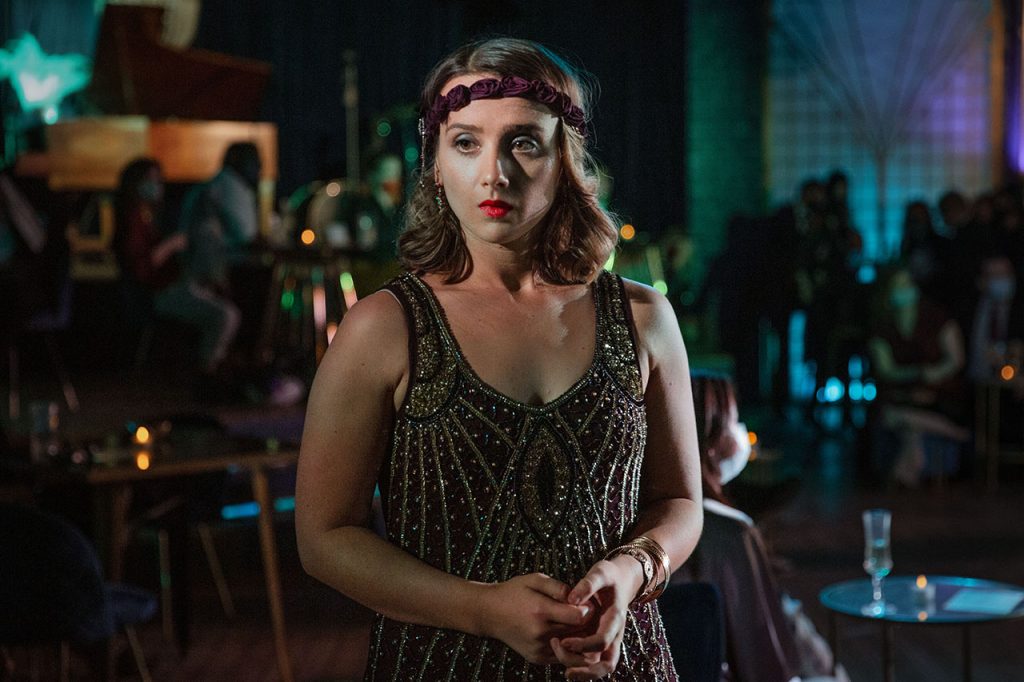
Rob Morgan: “I think it ended up just feeling like an unusually restrictive party…”
What’s good about the experience?
- I thought that overall the pacing was good, the use of music and dance was very clever in keeping us on-side, and almost all of the performances were very strong (personally I thought the actual Jay lacked a bit of presence).
- I thought Jordan designating a small group of her audience as “entourage” was clever and gave those audience a sense of coherent storyline, loyalty and a sense of being VIP, but there wasn’t any contrasting status and this felt more a result of luck than engagement per se.
What could be improved?
For me there were 3 key interrelated issues:
Layout
- The show, and especially delivery of the plot, was over-reliant on a large central hub room in which an awful lot of exposition was released. You could be drawn into outside rooms for additional vignettes, but there was absolutely no sense of exploration. The show was organised into a series of in-the-round vignettes which were self-contained, and the audience effectively processed back-and-forth between these and the main room. Immersive theatre runs on FOMO, and it’s fine to to feel that you’re missing out, but at times the noise of people having more fun in the next room actually drowned out actors trying to deliver primary exposition in the main room.
Crowd flow
- It was genuinely hard to get out of the central room without effectively ‘queueing’ at the edges to be drawn into the side rooms. This is partly because I think there was about 30% too much audience over capacity for this show’s ability to deliver experience. The draws into other rooms didn’t happen according to actors following plot-based paths which could be pursued by audiences; they happened when scenes in the main room broke up, which would always prompt a literal rush and press by audiences to get into the more exclusive-feeling side rooms. This meant that whenever the side doors opened, even if it was in the middle of an emotional scene like Myrtle’s death, audiences would literally just cross right through the action in order to try to get to the first-come-first-served side rooms.
- If you are really committed to delivering one-off monologues, you need to organise the audience’s attention around them, and not have them competing with a parallel attention economy for more exclusive-feeling content. I felt that some of the monologues lifted straight from the book would have benefitted from being in the side rooms instead of the ‘main stage’, and the ‘main stage’ should really have been more like a party room where the plot occasionally manifested. Guests who want to attend a theme party don’t want to hear ten minutes of uncut Fitzgerald, and guests who want to hear Fitzgerald want to feel rewarded and like insiders.
- The doors should have been open more for us to wander in and out, and the exposition should have gone through loops so it had more tolerance for wandering and so that the audience would pick up the broad strokes of the plot no matter where they were. It didn’t feel like attending a party at a mansion, and it didn’t work as a play; it was stuck somewhere between these two.
Exposition release
- It felt like the main room was for exposition, and the side rooms were for character depth. The plot was delivered in strict exposition in the main room, without any repetition, which made it feel more like an in-the-round theatre where you have to stand and shh, rather than an environment full of story to explore. Combined with the too-large audience, this meant the show was reliant on actor volume to deliver exposition. Even with a pretty helpful press-night crowd I struggled to hear key exposition. That’s fine, as long as you give me other opportunities to pick up those story pieces. I think as soon as stag and hen parties start to come in, they’re going to really struggle to hold crowd attention, will suffer from heckling, and will burn out those actors fast.
- I should stress that I don’t want it to seem like I just wanted it to be Punchdrunk. I am honestly quite a skeptic about Punchdrunk’s classic format too. In some ways this show had advantages over Punchdrunk: the actor dialogue was sharp and better at creating real engagement over time from a large group; they managed to build a real knees-up vibe. But it was neither an explorable narrative landscape, nor a really fun theme party. Successful immersive should be a combination of those two, and I think it ended up just feeling like an unusually restrictive party where you had to stand, be quiet and queue a lot.
Which elements do you like so much you’d like to use them in your work?
- I am absolutely going to nick the idea of teaching a dance to the audience as a whole. That’s a great way to occupy a large number of audience very cheaply. But for me, it should also be a moment to allow audiences to temporarily self-select into those looking for main room party vibes, and those looking to explore. When I go to a party, I end up in the kitchen, having conversations. The show didn’t really support that way of experiencing it, so it felt restrictive, rather than exclusive
Experience The Great Gatsby yourself. Book tickets here.
Read more WXO Experience Reviews:
- Swamp Motel’s The Kindling Hour across two reviews here and here
- The Royal Opera House’s VR-based Current Rising
- The New Meow Wolf In Las Vegas Is A Bright Blinky Light At The End Of The Pandemic Tunnel
- The Crystal Maze Live Experience
If you would like us to review your experience, get in touch.

